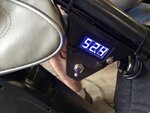Hi all, i'm trying to find info on dual battery bafang setup's but to no avail.
On a thread here it mentions the motor alternates between the two, is this automatic or manual via a 2 position switch?
I know the Bosch system uses a parallel cable and each battery's BMS via CAN bus comms has the ability to switch itself off allowing for complete automation in regards to alternating between 2 or more batteries.
Or does the Bafang motor have 2 separate battery inputs and can alternate automatically that way?
And is all of this power wiring simply 2 conductors?
On a thread here it mentions the motor alternates between the two, is this automatic or manual via a 2 position switch?
I know the Bosch system uses a parallel cable and each battery's BMS via CAN bus comms has the ability to switch itself off allowing for complete automation in regards to alternating between 2 or more batteries.
Or does the Bafang motor have 2 separate battery inputs and can alternate automatically that way?
And is all of this power wiring simply 2 conductors?


